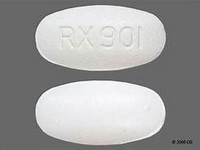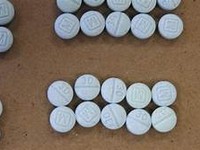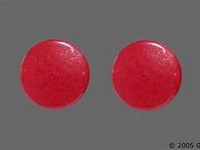pethidine hydrochloride

CLINICAL USE
Opiate analgesia
DOSE IN NORMAL RENAL FUNCTION
IV: 25–50 mg every 4 hoursOral: 50–150 mg every 4 hoursS/C, IM: 25–100 mg every 4 hours
PHARMACOKINETICS
Molecular weight :283.8 %Protein binding :60–80 %Excreted unchanged in urine : 5 Volume of distribution (L/kg) :4.17half-life – normal/ESRD (hrs) :3–6/7–32 DOSE IN RENAL IMPAIRMENT
GFR (mL/MIN)
20 to 50 : Dose as in normal renal function 10 to 20 : Use small doses – increase dosing interval to 6 hours and decrease dose by 25% <10 : Avoid if possible. If not, use small doses: increase dosing interval to 8 hours and decrease dose by 50% DOSE IN PATIENTS UNDERGOING RENAL REPLACEMENT THERAPIES
CAPD :Unknown dialysability. Dose as in GFR <10 mL/min HD :Not dialysed. Dose as in GFR <10 mL/min HDF/high flux :Unknown dialysability. Dose as in GFR <10 mL/min CAV/VVHD :Unlikely dialysability. Dose as in GFR 10 to 20 mL/min IMPORTANT DRUG INTERACTIONS
Potentially hazardous interactions with other drugsAnti-arrhythmics: delayed absorption of mexiletineAntidepressants: possible CNS excitation or depression with MAOIs and moclobemide – avoid concomitant use; possibly increased serotonergic effects with duloxetine; increased sedative effects with tricyclicsAntipsychotics: enhanced sedative and hypotensive effectAntivirals: concentration reduced by ritonavir but concentration of toxic pethidine metabolite increased – avoid concomitant useDopaminergics: risk of CNS toxicity with rasagiline – avoid concomitant use; hyperpyrexia and CNS toxicity reported with selegiline – avoid concomitant useSodium oxybate: enhanced effect of sodium oxybate – avoid concomitant use ADMINISTRATION
Reconstition
– Route
IV, oral, SC, IM Rate of Administration
IV: Bolus 3–4 minutes Comments
– OTHER INFORMATION
Risk of CNS and respiratory depression or convulsions, particularly in ERF patients receiving regular doses, due to accumulation of active metabolite, norpethidine. Norpethidine levels can be measured
See how to identify renal failure stages according to GFR calculation
See how to diagnose irreversible renal disease
Home









